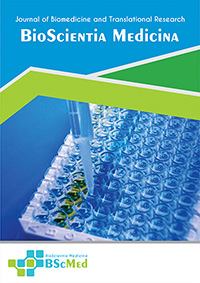Main Article Content
Abstract
Background: Acute eosinophilic pneumonia (AEP) is a rare, potentially life-threatening respiratory illness characterized by rapid onset of symptoms, diffuse pulmonary infiltrates, and marked eosinophilia in bronchoalveolar lavage (BAL) fluid. This meta-analysis aimed to synthesize published data to provide robust estimates of clinical characteristics, outcomes, and predictors of severity in patients diagnosed with AEP.
Methods: A systematic literature search was conducted in PubMed, Embase, Scopus, and Web of Science databases for studies published between January 1st, 2014, and December 31st, 2024. Inclusion criteria specified observational studies reporting on clinical features, diagnostic findings, and clinical outcomes in patients meeting standard AEP diagnostic criteria. Data extraction and quality assessment (using the Newcastle-Ottawa Scale) were performed independently by two reviewers. Pooled proportions and means were calculated using a random-effects model. Heterogeneity was assessed using the I² statistic. Potential predictors of MV requirement were evaluated by pooling odds ratios (ORs) where available.
Results: Six studies met the inclusion criteria, comprising a total of 315 patients diagnosed with AEP. The pooled mean age was 29.5 years (95% CI: 26.8-32.2), with a predominance of male patients (pooled proportion: 78%, 95% CI: 71%-84%, I²=45%). A strong association with recent smoking initiation or change was confirmed (pooled proportion: 85%, 95% CI: 78%-91%, I²=55%). Common presenting symptoms included dyspnea (95%), fever (92%), and cough (88%). While peripheral eosinophilia was variable at presentation (pooled mean: 650 cells/µL, 95% CI: 450-850), BAL eosinophilia was markedly elevated (pooled mean percentage: 42%, 95% CI: 37%-47%, I²=78%). The pooled proportion of patients requiring mechanical ventilation was substantial (38%, 95% CI: 30%-46%, I²=68%). Overall in-hospital mortality remained low (pooled proportion: 1.8%, 95% CI: 0.5%-3.5%, I²=0%). Significant heterogeneity was observed for most pooled estimates. Factors significantly associated with an increased likelihood of requiring mechanical ventilation included a shorter time from symptom onset to presentation (<3 days) (pooled OR: 3.1, 95% CI: 1.8-5.3, I²=35%) and higher initial C-reactive protein (CRP) levels (analyzed descriptively due to varied reporting).
Conclusion: This meta-analysis confirms that AEP typically affects young male smokers and presents acutely with severe respiratory symptoms. Despite variable peripheral eosinophilia, marked BAL eosinophilia is a diagnostic hallmark. A significant proportion requires mechanical ventilation, highlighting the potential severity. However, mortality is low with appropriate treatment, typically corticosteroids. Very acute onset and higher inflammatory markers may predict the need for ventilatory support, warranting close monitoring in these patients. Further research with standardized reporting is needed to refine predictors and optimize management strategies.
Keywords
Article Details
As our aim is to disseminate original research article, hence the publishing right is a necessary one. The publishing right is needed in order to reach the agreement between the author and publisher. As the journal is fully open access, the authors will sign an exclusive license agreement.
The authors have the right to:
- Share their article in the same ways permitted to third parties under the relevant user license.
- Retain copyright, patent, trademark and other intellectual property rights including research data.
- Proper attribution and credit for the published work.
For the open access article, the publisher is granted to the following right.
- The non-exclusive right to publish the article and grant right to others.
- For the published article, the publisher applied for the Creative Commons Attribution-NonCommercial-ShareAlike 4.0 International License.





